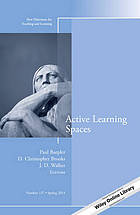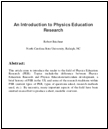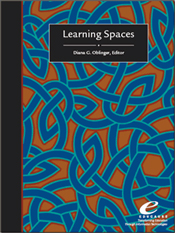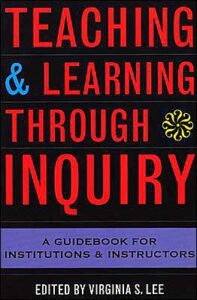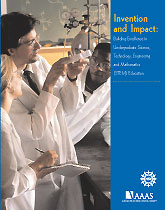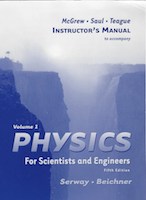BOOKS AND CHAPTERS
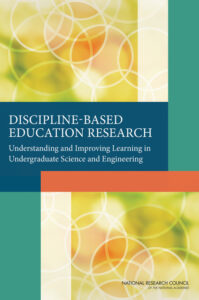
Discipline-Based Education Research
Discipline-Based Education Research is based on a 30-month study built on two workshops held in 2008 to explore evidence on promising practices in undergraduate science, technology, engineering, and mathematics (STEM) education. This book asks questions that are essential to advancing DBER and broadening its impact on undergraduate science teaching and learning. The book provides empirical research on undergraduate teaching and learning in the sciences, explores the extent to which this research currently influences undergraduate instruction, and identifies the intellectual and material resources required to further develop DBER.
Discipline-Based Education Research provides guidance for future DBER research. In addition, the findings and recommendations of this report may invite, if not assist, post-secondary institutions to increase interest and research activity in DBER and improve its quality and usefulness across all natural science disciples, as well as guide instruction and assessment across natural science courses to improve student learning. The book brings greater focus to issues of student attrition in the natural sciences that are related to the quality of instruction. Discipline-Based Education Research will be of interest to educators, policy makers, researchers, scholars, decision makers in universities, government agencies, curriculum developers, research sponsors, and education advocacy groups.
Here is a link to more information.
Active Learning Spaces
With the paradigm shift to student-centered learning, the physical teaching space is being examined The configuration of classrooms, the technology within them, and the behaviors they encourage are frequently represented as a barrier to enacting student-centered teaching methods, because traditionally designed rooms typically lack flexibility in seating arrangement, are configured to privilege a speaker at the front of the room, and lack technology to facilitate student collaboration.
But many colleges and universities are redesigning the spaces in which students learn, collapsing traditional lecture halls and labs to create new, hybrid spaces—large technology-enriched studios—with the flexibility to support active and collaborative learning in larger class sizes. With this change, our classrooms are coming to embody the 21st-century pedagogy which many educators accept, and research and teaching practice are beginning to help us to understand the educational implications of thoughtfully engineered classrooms—in particular, that space and how we use it affects what, how, and how much students learn.
This is the 137th volume of this Jossey-Bass higher education series. It offers a comprehensive range of ideas and techniques for improving college teaching based on the experience of seasoned instructors and the latest findings of educational and psychological researchers.
Getting Started in PER
Robert Beichner wrote an invited, peer-reviewed chapter entitled “Introduction to Physics Education Research,” for C. Henderson and K. Harper (Eds.), Getting Started in PER, College Park, MD: American Association of Physics Teachers.
Here is a link to more information.
PER-Based Reform in University Physics
Robert Beichner joined colleagues Jeff Saul, David Abbott, Jeannie Morse, Duane Deardorff, Rhett Allain, Scott Bonham, Melissa Dancy and John Risley in an invited, peer-reviewed chapter chapter entitled “Student-Centered Activities for Large Enrollment Undergraduate Programs (SCALE-UP) project,” of E. F. Redish and P. J. Cooney (Eds.), PER-Based Reform in University Physics. College Park, MD: American Association of Physics Teachers, 2006.
Here is a link to more information.
Matter and Interactions
Popularly known as “M & I,” this collection of instrutional materials represents a comprehensive refreshing of the introductory physics curriculum. Ruth Chabay and Bruce Sherwood’s thoroughly 21st century approach is embodied in a two-volume textbook, a growing collection of associated instructional materials including a large set of innovative WebAssign questions,, a growing collection of associated instructional materials, and extensive instructor resources. It has been adopted by three of the four largest engineering schools in the nation.
The curriculum helps students see that a small number of fundamental principles can explain a huge variety of physical phenomena. Moreover, understanding concepts at the microscopic level leads to predicting macroscopic measurements. Students learn to model physical systems by making idealizations, siimplifying assumptions, and by writing programs to model systems computationally.
Here is a link to more information.
College Physics
Robert Beichner joined Raymond Serway to write the 5th edition of this introductory calculus-based physics textbook. Once published, it rapidly became the leading such book in the nation. At one time it was used by more than 1/3 of all science and engineeing majors. Although the text is now out of print, many of the changes introduced in the 5th edition are still present in the current versions.
Learning Spaces
Space, whether physical or virtual, can have a significant impact on learning. Learning Spaces focuses on how learner expectations influence such spaces, the principles and activities that facilitate learning, and the role of technology from the perspective of those who create learning environments: faculty, learning technologists, librarians, and administrators. Information technology has brought unique capabilities to learning spaces, whether stimulating greater interaction through the use of collaborative tools, videoconferencing with international experts, or opening virtual worlds for exploration. This e-book represents an ongoing exploration as we bring together space, technology, and pedagogy to ensure learner success.
Robert Beichner wrote a chapter for this book that was edited by Diana Oblinger for the Educause Learning Initiative. His chapter describes the SCALE-UP project. Educause is a non-profit organization whose mission is to advance higher education by promoting the intelligent use of instructional technology.
Teaching & Learning Through Inquiry
Robert Beichner and Maria Oliver-Hoyo, a chemistry education researcher at NCSU, presented a chapter describing the SCALE-UP classroom and the pedagogies used in it. This was done as part of a popular book promoting inquiry-based college education.
Click here for more information.
Essentials of Educational Technology
Robert Beichner assisted James Schwartz in the creation of this small text that is designed to help preservice teachers see the pros and cons of educational technology. Presenting the material as an integrated whole, the book encourages readers to think about the enormous power and potential of technology with its ability to change the way we think and learn. The material is connected to every major curriculum area, and includes accompanying activities. It also prepares readers to anticipate and prevent unwanted, negative effects of technology.
Click here for more information.
Invention and Impact: Building Excellence in Undergraduate STEM Education
Robert Beichner was joined by Jeffery Saul in writing this chapter describing the SCALE-UP project. This was completed as part of a major effort by the American Association for the Advancement of Science and the National Science Foundation to examine and disseminate state-of-the-art instruction in the STEM disciplines.
Click here for more information.
Handbook of College Science Teaching
Robert Beichner joined colleagues John Belcher of MIT and Yehudit Dori from the Technion-Israel Institute of Technology in a chapter discussing the latest ways to teach science as well as techniques for assessing the learning that takes place.
Click here for more information.
Elementary Science
The first edition of this text for preservice teachers was written by Robert Beichner. Later he brought in Daniel Dobey to take the lead in further editions. This concise book presents the reader with the essentials of pertinent research, valued classroom methodology, and current practice in teaching elementary science.
Click here for more information.
Instructor’s Manual to Accompany Serway & Beichner, vol 1
Jeff Saul worked on this ancillary material with Ralph McGrew and Charles Teague, along with some help by Duane Deardorff and Rhett Allain. Jeff’s main contribution was the 100-page introduction to active learning and physics education research.
